Surprising areas rich in cultural properties
Table of Contents
1: What are National Treasures and National Important Cultural Properties?
2: Ranking of National Treasures and National Important Cultural Properties by number
3: Prefectures rich in national treasures and cultural properties not visited by foreign visitors
4: The best ‘Little‐known good spots’ for travelers seeking a local trip or a trip to an unfamiliar place

1: What are National Treasures and National Important Cultural Properties?
We compiled the National Treasures and Important Cultural Properties by prefecture according to the Agency for Cultural Affairs‘ website.
The Agency for Cultural Affairs designates national treasures as being of particular value from the perspective of world culture. Important cultural properties are also defined as ‘important cultural properties.’ National Treasures and Important Cultural Properties are categorized as ‘buildings’ and ‘arts and crafts.’ 1,132 National Treasures and 13,377 Important Cultural Properties (including the number of National Treasures) had been designated as of 1 April 2023. Of the ‘National Treasures,’ 230 are defined as ‘Buildings’ and 902 ‘Arts and Crafts.’ Of the ‘Important Cultural Properties,’ 2,557 are designated as ‘Buildings’ and 10,820 as ‘Arts and Crafts’ (including the number of National Treasures).
As a non-specialist in cultural property, I have always been satisfied when I visit a National Treasure. In particular, I am often more impressed when I visit National Treasure buildings.
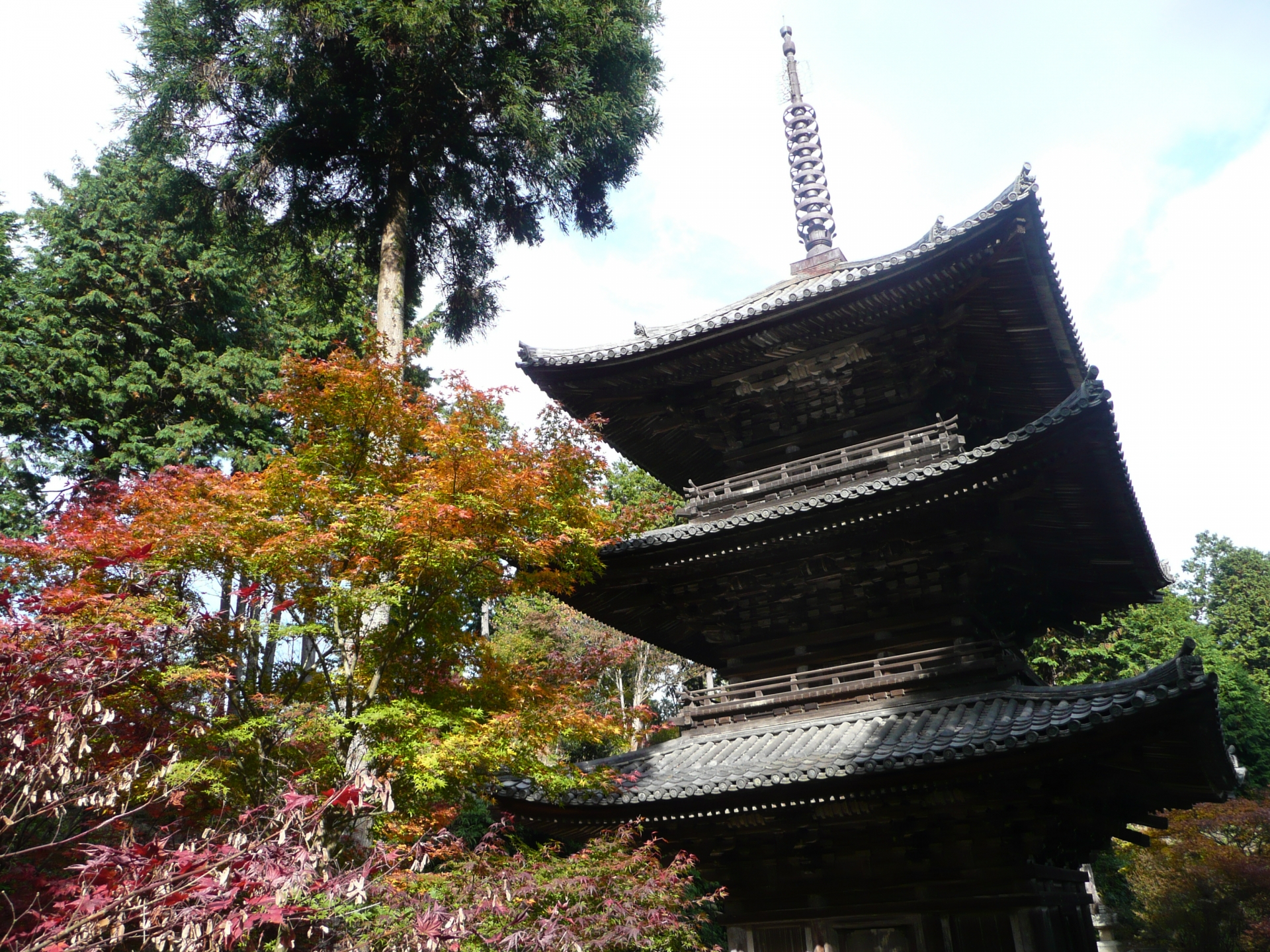
2: Ranking of National Treasures and National Important Cultural Properties by number
The number of national treasure buildings ranked first: 64 in Nara and second: 52 in Kyoto. Unsurprisingly, the two prefectures in which the ancient capital was located occupied first and second places in that order. In particular, many may be surprised by Shiga in third place, even though it is a neighboring prefecture of Kyoto. However, Shiga (22), Hyogo (11), Tochigi, Wakayama, and Hiroshima (7 each) came in third, fourth, and fifth places, respectively.
Ranking of national treasure buildings by prefecture (Number)
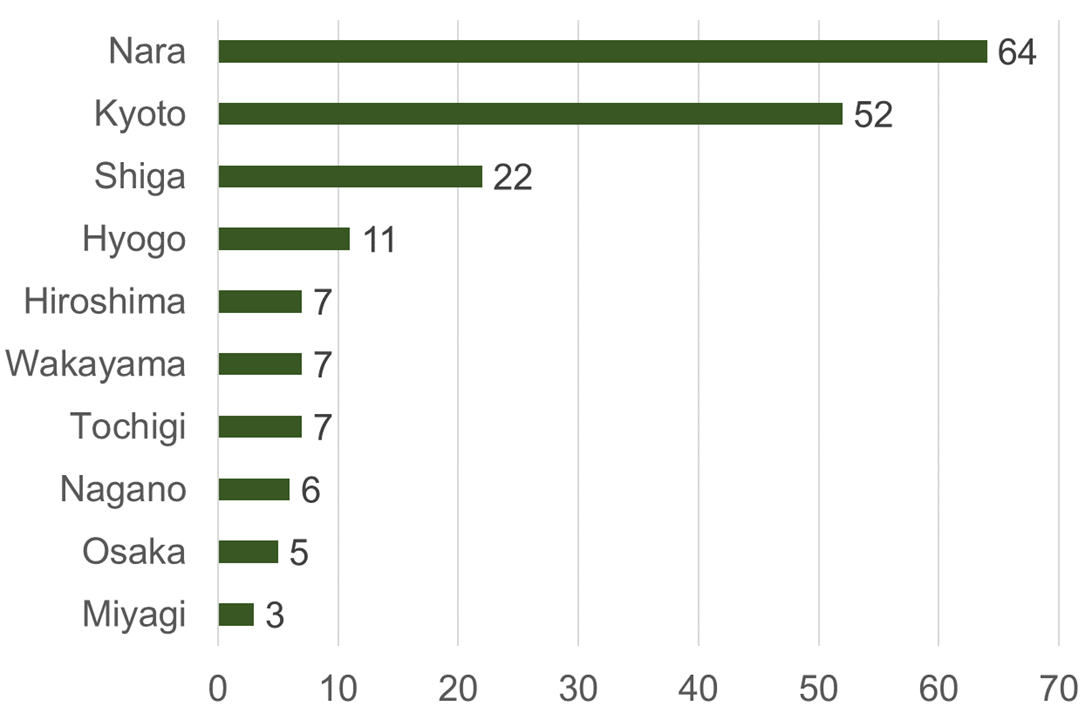
Source: Agency for Cultural Affairs
As with the National Treasures, two prefectures dominated the top two places for Important Cultural Property buildings, excluding National Treasures: 1st: Kyoto 248, 2nd: Nara 203. However, even here, Shiga was in third place with 167, Hyogo in fourth place with 101, and Osaka in fifth place.
Ranking of important cultural property buildings by prefecture (Number)

Source: Agency for Cultural Affairs
Meanwhile, the top three national treasures of arts and crafts are in the current and ancient capital, with Tokyo in first place with 286, Kyoto in second place with 185, and Nara in third place with 142. Unlike buildings, fine arts and crafts can be moved around, so they were collected in the current capital, Tokyo. Osaka in fourth place (57) and Shiga in fifth (34), again in Shiga Prefecture.
Ranking of national treasure fine arts and crafts by prefecture (Number)
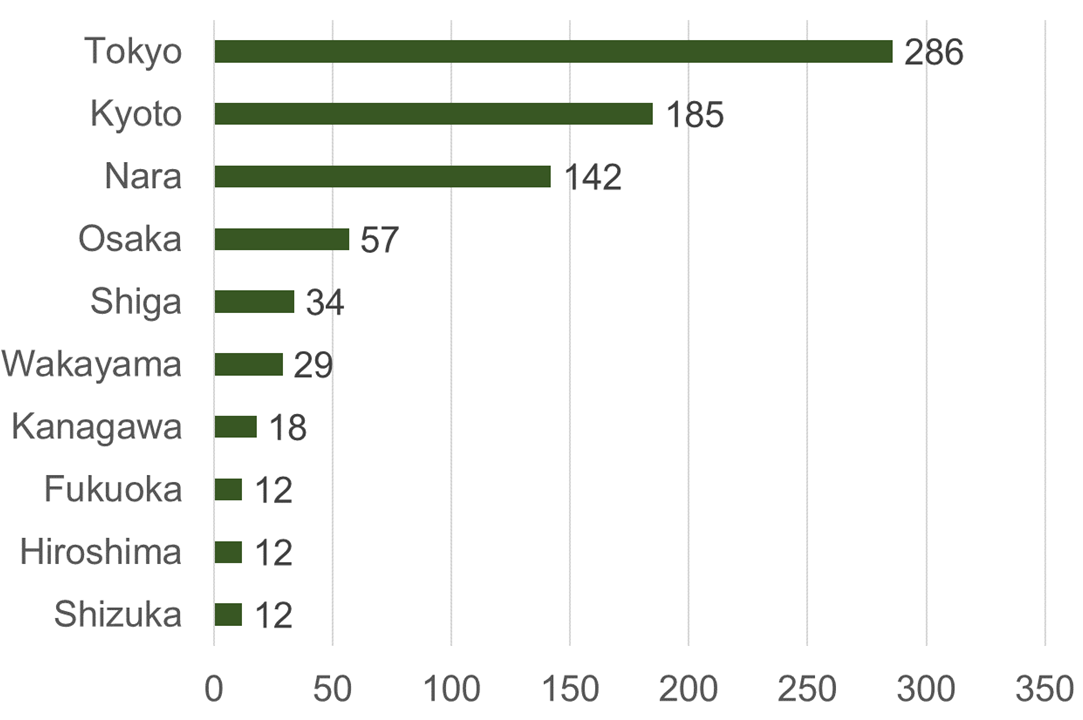
Source: Agency for Cultural Affairs
The trend remains the same for fine arts and crafts of important cultural property, with national treasures excluded: first: Tokyo, second: Kyoto, third: Nara, fourth: Shiga, fifth: Osaka.
Ranking of fine arts and crafts of important cultural properties by prefecture (Number)
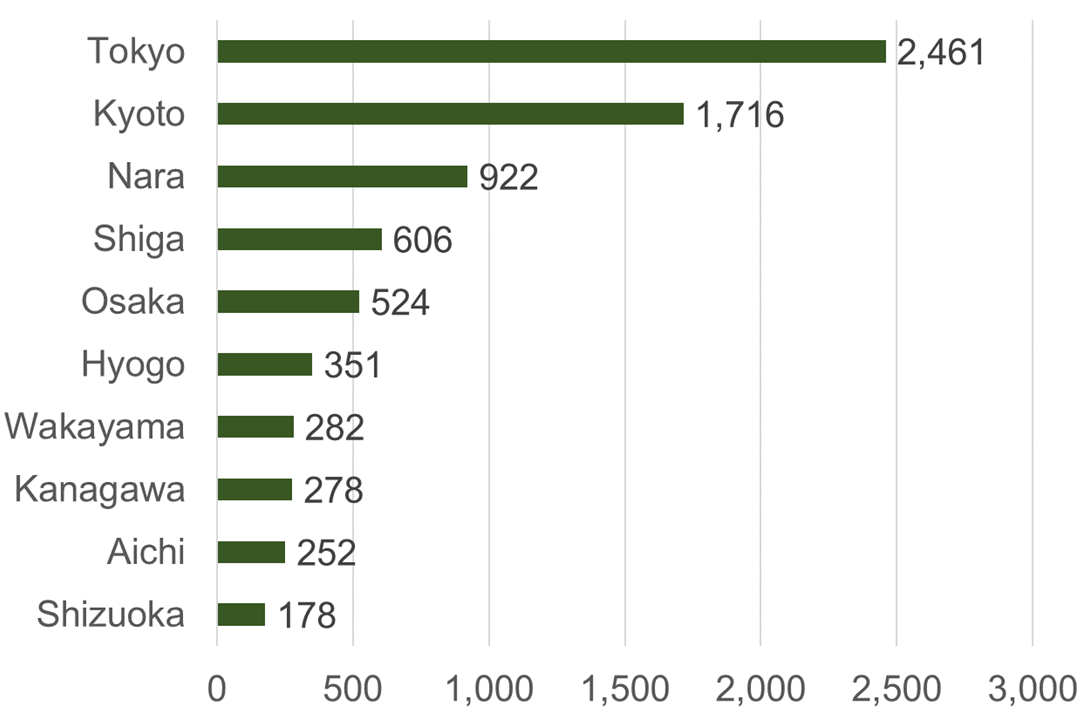
Source: Agency for Cultural Affairs
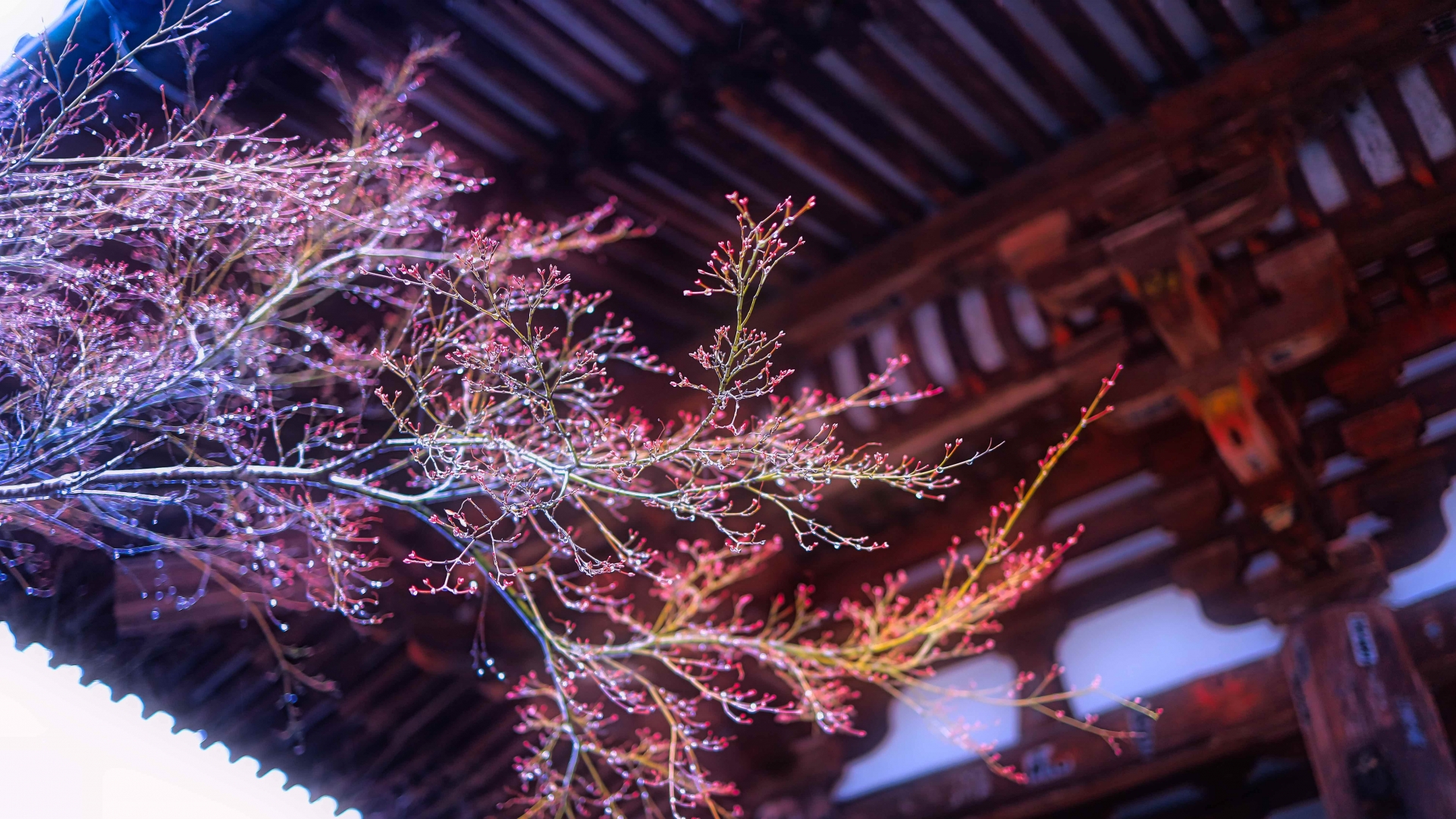
3: Prefectures rich in national treasures and cultural properties not visited by foreign visitors
The foreign visitors concentrated on visiting by prefecture (2019, multiple responses) in five prefectures: Tokyo 47.2%, Osaka 38.6%, Chiba 35.1%, Kyoto 32.8%, and Nara 11.7%. On the other hand, Shiga Prefecture, which, as mentioned above, is rich in national treasures and cultural assets, ranks lower at 32nd: 0.6%.
Visiting rate of foreigners by prefecture (2019, multiple responses)
| 1 | Tokyo | 47.2% |
| 2 | Osaka | 38.6% |
| 3 | Chiba | 35.1% |
| 4 | Kyoto | 27.8% |
| 5 | Nara | 11.7% |
| 6 | Aichi | 9.0% |
| 7 | Fukuoka | 8.7% |
| 8 | Hokkaido | 8.0% |
| 9 | Kanagawa | 7.8% |
| 10 | Okinawa | 6.1% |
| 11 | Hyogo | 6.0% |
| 12 | Yamanashi | 5.5% |
| 13 | Shizuoka | 4.8% |
| 14 | Oita | 3.3% |
| 15 | Hiroshima | 3.0% |
| 16 | Gifu | 3.0% |
| 17 | Nagano | 2.9% |
| 18 | Ishikawa | 2.0% |
| 19 | Kumamoto | 1.9% |
| 20 | Nagasaki | 1.5% |
| 21 | Tochigi | 1.3% |
| 22 | Toyama | 1.1% |
| 23 | Wakayama | 1.1% |
| 24 | Saitama | 1.1% |
| 25 | Kagoshima | 1.0% |
| 26 | Okayama | 1.0% |
| 27 | Miyagi | 1.0% |
| 28 | Kagawa | 1.0% |
| 29 | Saga | 0.9% |
| 30 | Ibaraki | 0.9% |
| 31 | Mie | 0.7% |
| 32 | Aomori | 0.7% |
| 33 | Shiga | 0.7% |
| 34 | Niigata | 0.6% |
| 35 | Yamaguchi | 0.6% |
| 36 | Gunma | 0.5% |
| 37 | Miyazaki | 0.5% |
| 38 | Tottori | 0.5% |
| 39 | Iwate | 0.4% |
| 40 | Yamagata | 0.4% |
| 41 | Ehime | 0.4% |
| 42 | Akita | 0.3% |
| 43 | Fukushima | 0.3% |
| 44 | Tokushima | 0.3% |
| 45 | Shimane | 0.2% |
| 46 | Fukui | 0.2% |
| 47 | Kochi | 0.2% |
Source: Japan Tourism Agency
We, therefore, compared the share of national treasures and important cultural properties by prefecture and the visitation rate of foreign tourists by prefecture and created a ranking of prefectures that are ‘Little‐known good spots‘ for cultural assets. The results show that some somewhat surprising prefectures came out on top.
Comparison of the share of national treasure buildings by prefecture and the visiting rate by foreign visitors
| 1 | Shiga | 5.2% |
| 2 | Wakayama | 1.8% |
| 3 | Mie | 0.8% |
| 4 | Ehime | 0.7% |
| 5 | Fukui | 0.6% |
| 6 | Shimane | 0.5% |
| 7 | Takachi | 0.4% |
| 8 | Yamaguchi | 0.3% |
| 9 | Yamagata | 0.3% |
| 10 | Fukushima | 0.3% |
Source: Japan Tourism Agency, Agency for Cultural Affairs
Comparison of the share of all national treasures (buildings, fine arts and crafts) by prefecture and the visiting rate by foreign visitors
| 1 | Nara | 6.5% |
| 2 | Shiga | 4.3% |
| 3 | Wakayama | 2.1% |
| 4 | Ehime | 0.7% |
| 5 | Fukui | 0.3% |
| 6 | Iwate | 0.3% |
| 7 | Tochigi | 0.2% |
| 8 | Shimane | 0.2% |
| 9 | Yamaguchi | 0.2% |
| 10 | Yamagata | 0.1% |
Source: Japan Tourism Agency, Agency for Cultural Affairs
Comparison of the share of National Important Cultural Properties buildings by prefecture and the visiting rate by foreign tourists
| 1 | Shiga | 6.7% |
| 2 | Wakayama | 2.3% |
| 3 | Ehime | 1.6% |
| 4 | Okayama | 1.2% |
| 5 | Fukushima | 1.0% |
| 6 | Yamaguchi | 1.0% |
| 7 | Fukui | 1.0% |
| 8 | Niigata | 0.8% |
| 9 | Shimane | 0.8% |
| 10 | Yamagata | 0.8% |
Source: Japan Tourism Agency, Agency for Cultural Affairs
Comparison of the share of all National Important Cultural Properties (buildings, fine arts and crafts) by prefecture and the percentage of visits by foreign visitors
| 1 | Shiga | 5.5% |
| 2 | Wakayama | 1.9% |
| 3 | Ehime | 0.8% |
| 4 | Mie | 0.7% |
| 5 | Fukui | 0.6% |
| 6 | Shimane | 0.5% |
| 7 | Takachi | 0.5% |
| 8 | Yamaguchi | 0.4% |
| 9 | Fukushima | 0.4% |
| 10 | Yamagata | 0.4% |
Source: Japan Tourism Agency, Agency for Cultural Affairs
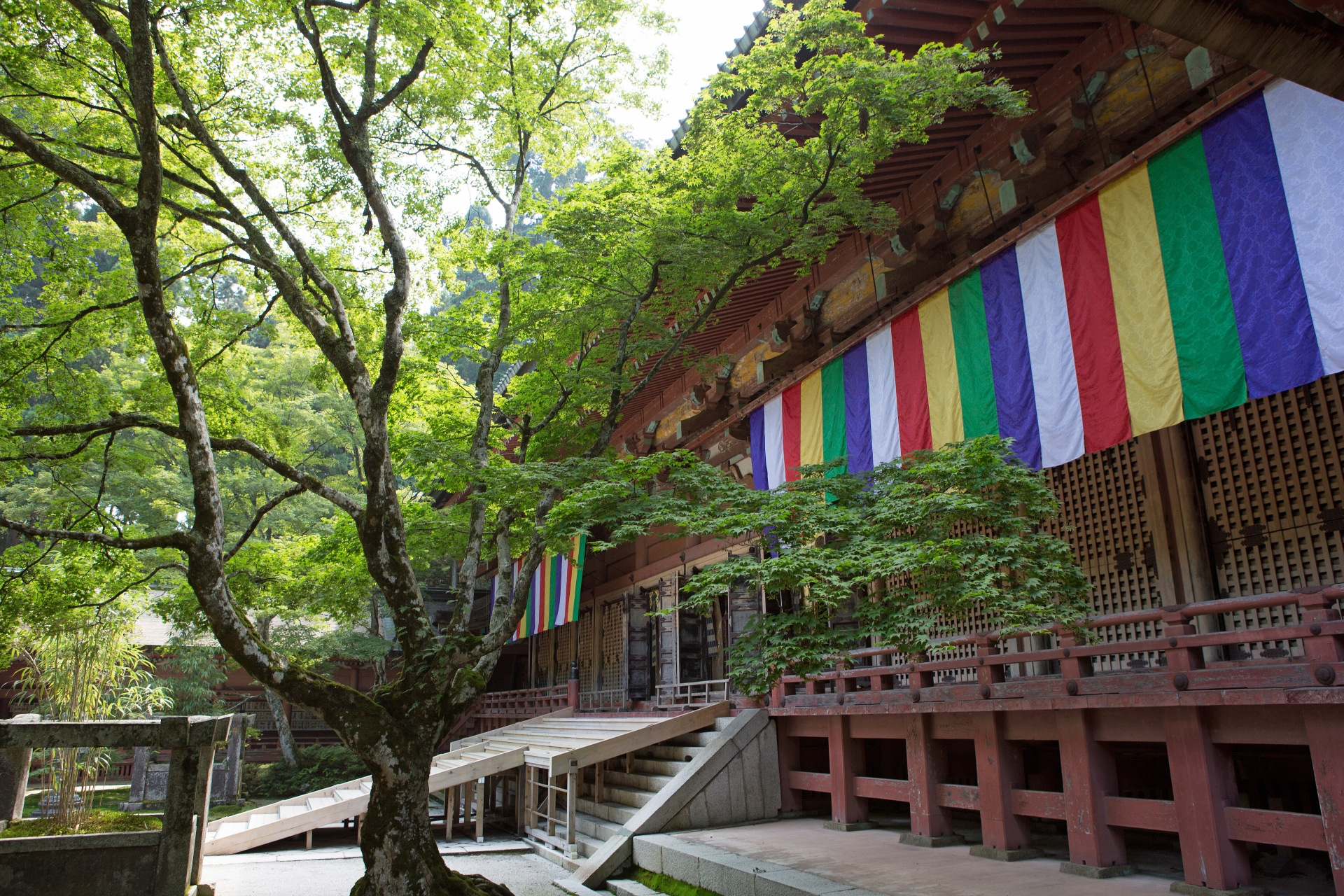
4: The best ‘Little‐known good spots’ for travelers seeking a local trip or a trip to an unfamiliar place
According to Booking.com’s 2023 Travel Predictions, 88% of travelers want nostalgic trips, 80% want community-minded trips, and 73% want to travel “Out of comfort zone.” There is a possibility and a trend for foreign tourists, who have tended to concentrate on big cities and major tourist destinations, to disperse to the countryside.
The most popular types of vacations and experiences in 2023

Source: Booking.com.
Foreign visitors who have visited Tokyo, Osaka, and Kyoto many times may wish to go elsewhere on their next trip to Japan and quietly enjoy Japanese history and cultural assets. Candidates for this are the prefectures introduced here, such as Shiga, Wakayama, Ehime, Mie, and Fukui, which have many cultural properties to see, but foreign travelers rarely visit. Although some of these places are inconvenient, foreign tourists unfamiliar with regional travel are welcome to use our concierge service.
